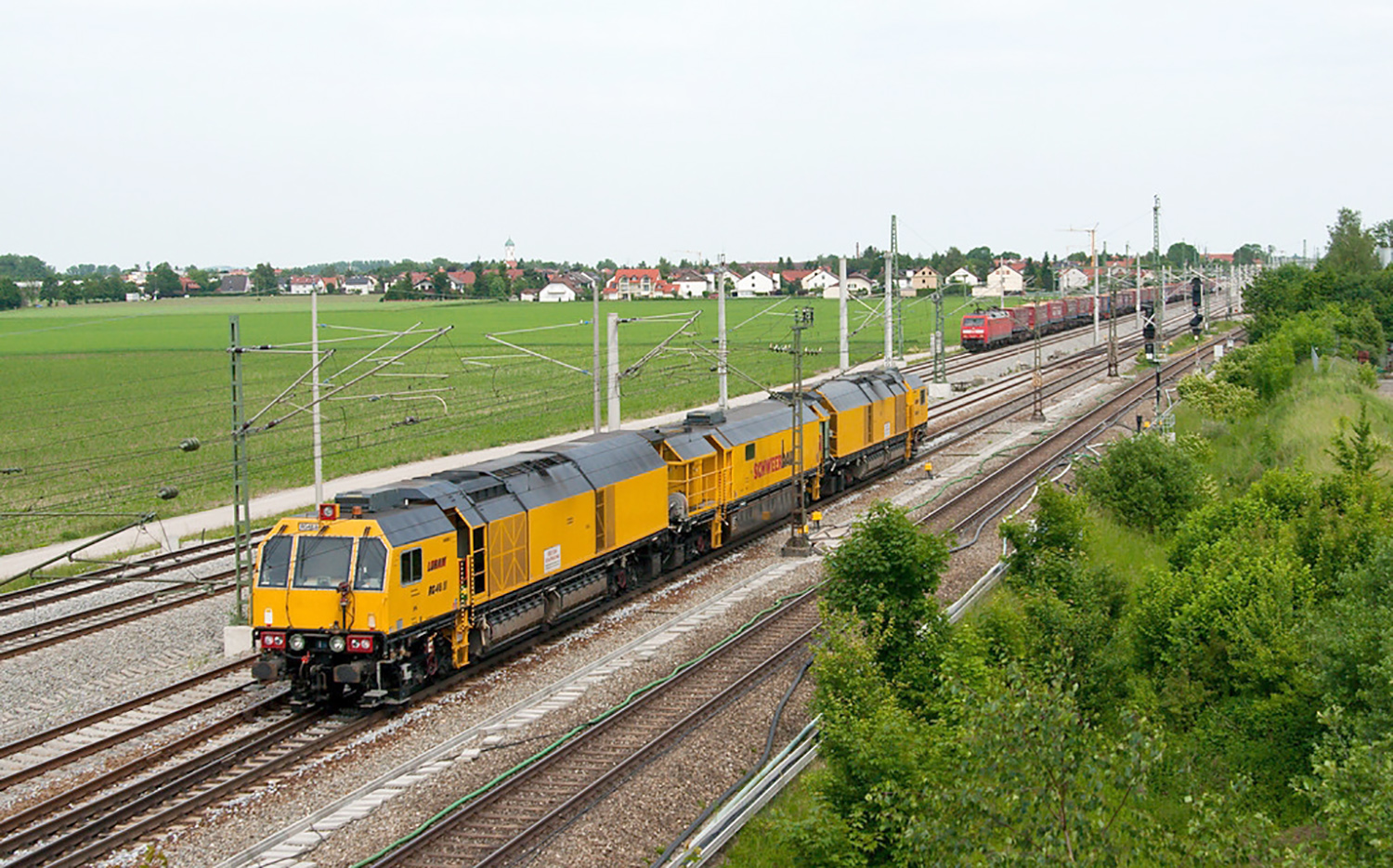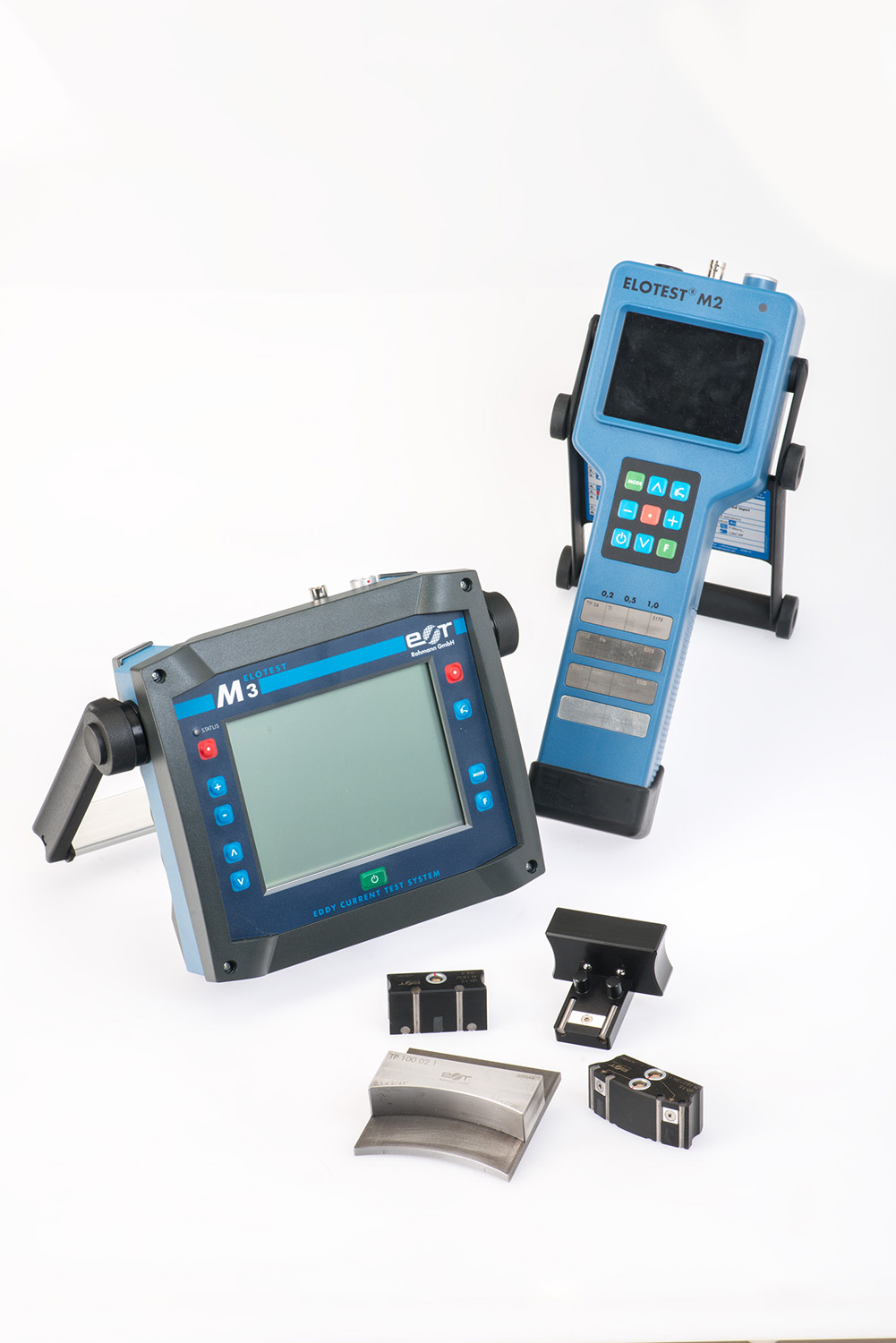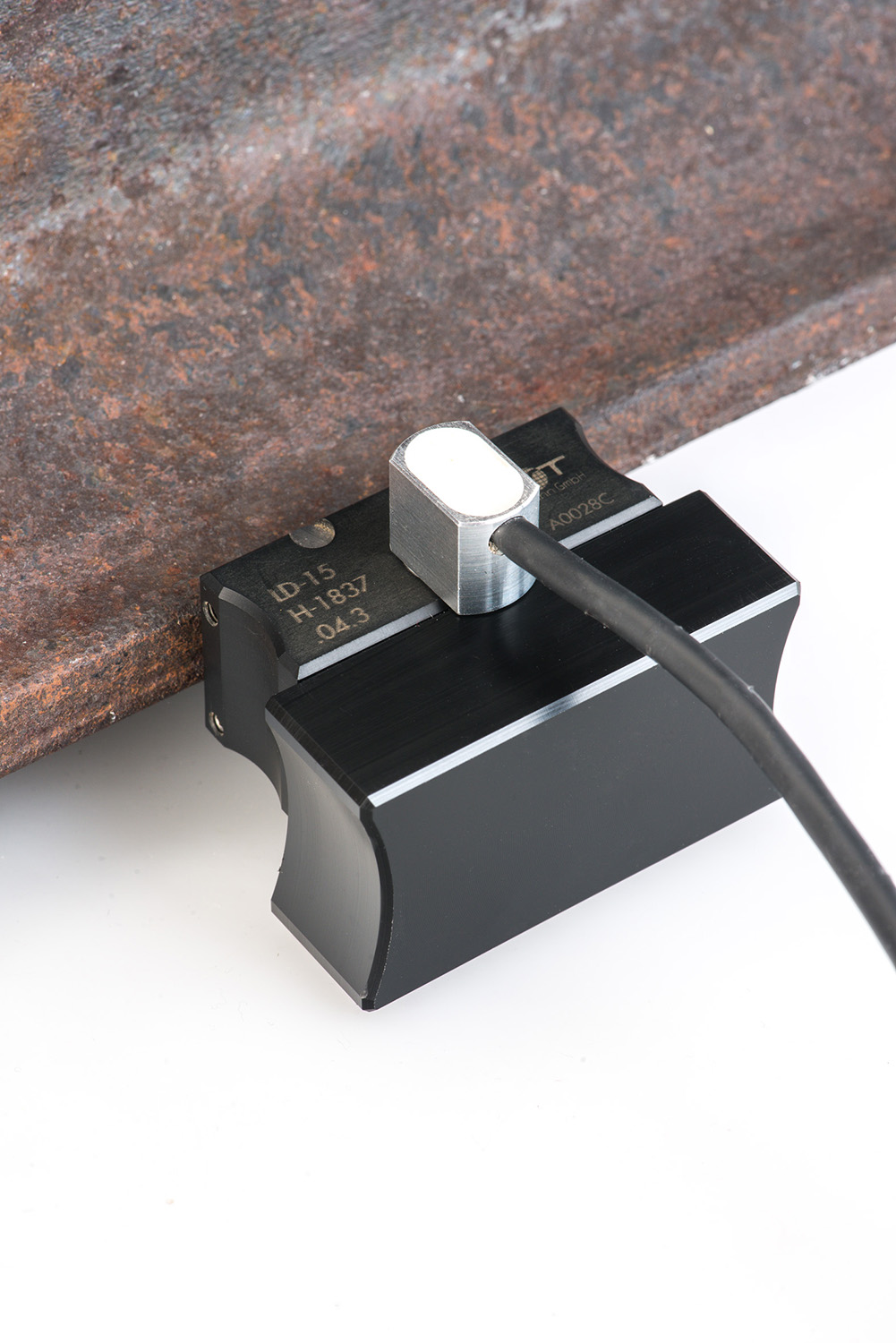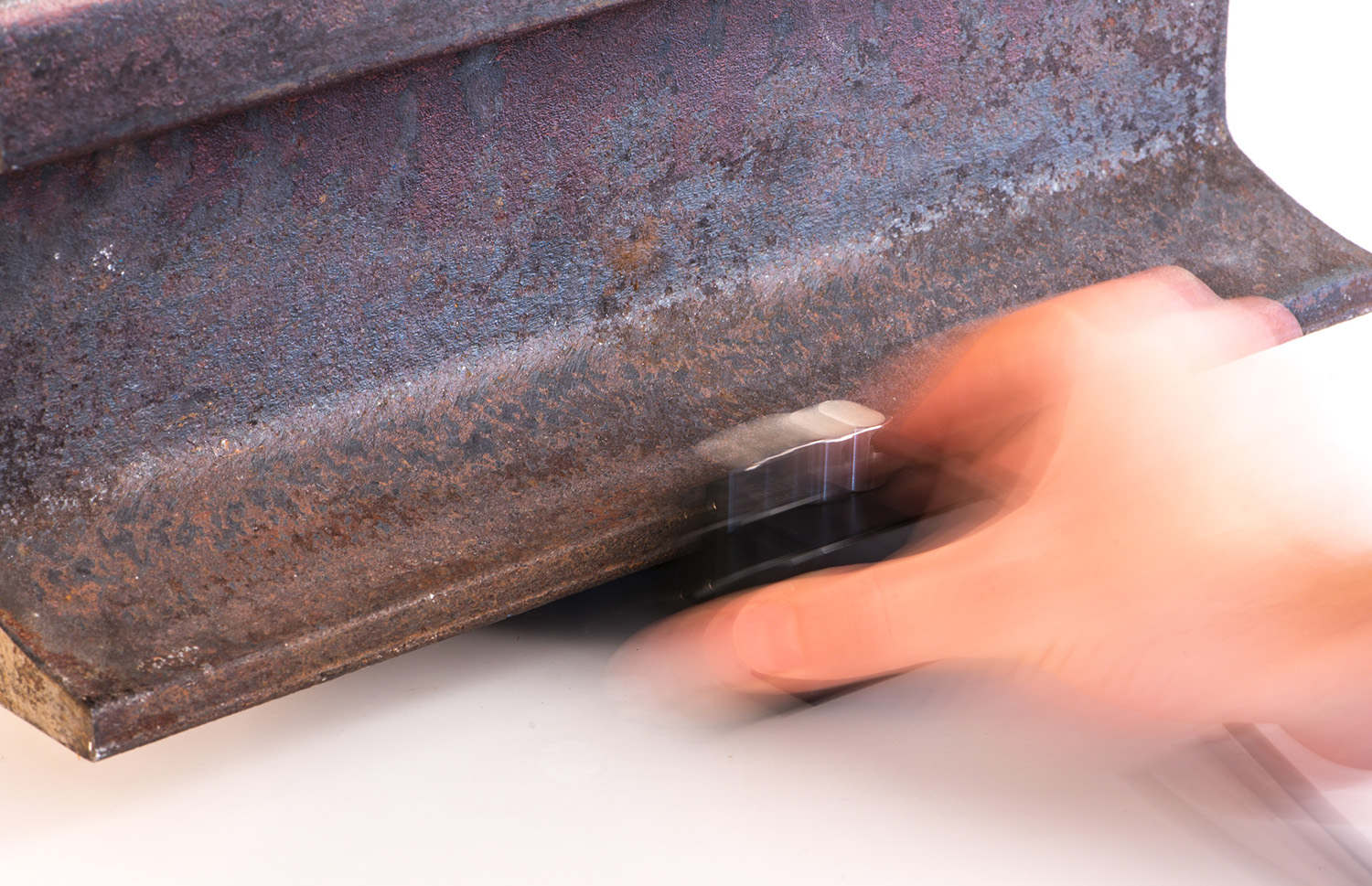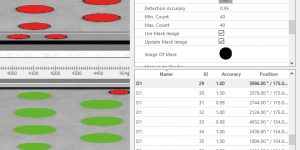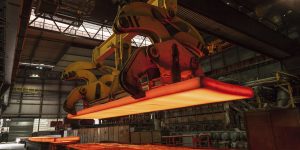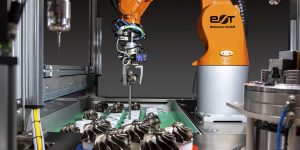Description
The track network is exposed to very heavy loads from today’s rail traffic with high train speeds and high axle loads. In the past, the rail material could wear out so quickly that any surface defects that arose were already worn away by driving.
However, new rail materials have such high grades and thus high wear resistance that the material removal during normal operation is no longer sufficient to prevent the cracks originating from the surface from growing. Trains with automated non-destructive testing are required in order to be able to optimally plan damage repair and monitor its success. The main focus of eddy current testing is on detecting surface-related defects at the running edge (head checks).
The “SBM” eddy current testing system is a solution for rail processing machines that operate at speeds of up to 20 km/h. The compact mechanics are designed for rough use in rail processing. The test system detects and evaluates damage in rails before and after processing and provides proof of freedom from damage. Each of the two rails is tested with at least 2 and up to 8 sensors.
For regular inspection of the rail network, an eddy current system “SPZ” for installation in rail inspection trains is available as a variant. Due to the higher speeds, longer distances can be checked in one go. Here too, each rail is tested with up to 8 sensors.
Both systems (“SBM” and “SPZ”) record, evaluate and document the test results. The detected damage (head checks) is classified into several groups depending on the depth determined. Your position in the inspected track section is visualized true to location and summarized in a clear inspection report.
